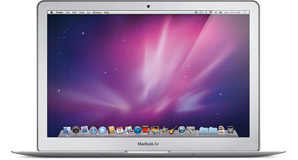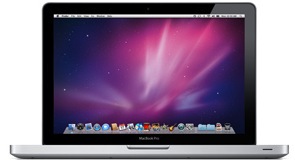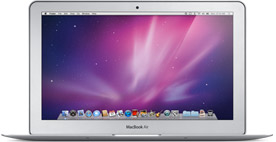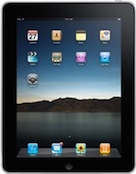The new MacBook Air was just released, and it’s a hell of an upgrade. It got much better and it’s at an extremely compelling price.
It’s a great computer, but it’s not for everyone. It’s like a two-seater car. Read on if you think it might be for you.
The Air’s limitations
I previously owned an Air as my only laptop (but not my only computer). Its size and weight made carrying and traveling with it a pleasure, but after a while, its hardware was too limiting and I had to upgrade to a 15-inch MacBook Pro.
What got in my way the most that’s now alleviated:
- The screen resolution was cramped for doing development work or nontrivial multitasking.
- The hard drive was so slow that overall system performance was abysmal, especially with only 2 GB of RAM.
- There was only one USB port. You’d be amazed how often this limitation gets in your way.
- The 1.6 GHz CPU was so slow that basic operations we take for granted these days — especially stutter-free video playback, and especially when it’s Flash — wouldn’t be practical or reliable. (This has been improved in the new ones, but I don’t yet know by how much.)
What got in my way most that’s still true with the new Air:
- There’s no optical drive. You might say that you’d never need it, but in practice, I found myself needing it a few times: burning a disc for someone while I was on vacation, or reading a disc I was given (like the Snow Leopard beta at WWDC ’09).
- There’s no wired Ethernet. (And the $29 USB Ethernet Adapter is only 10/100.) I’d often want to transfer a bunch of movies or other large files onto it before a trip, and it would take forever over Wi-Fi.
- The battery life, while not terrible, isn’t as good as a 13-inch or 15-inch MacBook Pro.
- There’s no FireWire, which means no fast external hard drives and no target disk mode. I didn’t need it often, but I really missed it when I did.
Noteworthy changes from the first Air
It has a few huge improvements:
- Much higher resolution: 1440×900, up from 1280×800. This brings it from the 13-inch class to the 15-inch class1. I’ve always wanted a light 13-inch notebook with a 15-inch-class screen resolution, and Apple just released one.
- SSD only. The old Air base-model’s 1.8″ hard drives were unbearably slow. SSDs have always been the only sensible option for the Air, and it’s nice that they’re now the only option.
- Two USB ports instead of one. This matters more than you’d think.
- SD-card reader (13-inch only). Useful if you often needed that USB port for a card reader, although this isn’t a great photo-management computer.
- Ports that are perpendicular to the desk and aren’t behind a flip-down door. So you can probably use any square-ended MagSafe adapter you already own to charge it without hanging the corner off the desk like with the old MacBook Air.
And one minor downgrade:
- The keyboard is no longer backlit.
One thing that fortunately hasn’t changed: the screen still has the original-MacBook-style plastic-glossy finish with the metal bezel, not the far more reflective glass over a black bezel as seen on the MacBook Pro.
In addition to the annoyance of the extreme reflectivity, the Pro’s glass is very heavy and requires a thicker lid. The Air can’t afford the weight or thickness, so it gets the much more reasonable (and much less reflective) plastic-glossy.
It certainly raises the question of why any Apple laptops — which can’t afford excess weight, thickness, or versatility-limiting factors like reflectivity — have glass screens at all, when most of the benefits (color, contrast) are just as effective with the much more practical plastic-glossy screen.
Maybe there’s hope of losing the glass on the next MacBook Pro.2 But I wouldn’t hold my breath.


11-inch or 13-inch Air?
The 11-inch looks impressively tiny, but realistically, most people are unlikely to see significant benefits in portability or practicality from the 11-inch over the 13-inch. There are very few situations in which you’d be able to comfortably carry or use the 11-inch but not the 13-inch.
The 11-inch screen resolution of 1366×768 is great for its size, but it’s going to be very cramped, especially vertically. Screen size is very important and noticeable in everyday use, and it’s often the limiting factor for how much work advanced users can comfortably get done on a laptop.
The 11-inch is also significantly slower and with less battery life, and lacks the SD-card slot, although these are less important factors.
So, tentatively (I still haven’t seen these in real life), I wouldn’t recommend the 11-inch for most people.
John Gruber makes an excellent point in response:
I think what he’s missing about the smaller 11.6-inch model is that it might appeal to frequent air travelers (and anyone else who works in a cramped space).
Subjectively, I used the old 13-inch Air on some plane rides, and the 15-inch MacBook Pro on some others, and they both require you to adapt a fairly uncomfortable screen angle if the person in front of you leans their seat all the way back. (As my own quiet form of social environmentalism, I never do that.)
The 11-inch looks like its lid is shorter by enough to be a significant benefit for this particular use. So if your primary use for the laptop is to be used in coach on airplanes, the 11-inch is a better bet. But in nearly all other cases, I imagine the 13-inch will be much more useful.


13-inch Air or 13-inch MacBook Pro?
Before today, Apple effectively offered three sensible laptop choices:
- Low-cost: the 13-inch MacBook Pro (from $1,199 to $1,499)
- Ultralight: the MacBook Air ($1,499 to $1,799)
- Workhorse: the 15-inch MacBook Pro ($1,799 to $2,199)
The new Air comes close to merging the low-cost and ultralight categories. But it doesn’t quite make it.
Compared to the new 13-inch Air, the 13-inch MacBook Pro is 50% heavier (more if you include the two laptops’ respective power bricks), a lot thicker on the wrist edge, a lot more expensive when equipped with an SSD of the same size, and with a much lower screen resolution behind a highly reflective, glass-only screen.
But the MacBook Pro has better battery life, a CD/DVD drive, much faster CPUs, a higher RAM ceiling, Firewire 800, Gigabit Ethernet, and options for much larger (but much slower) hard drives — and if a RAM stick or hard drive dies or needs to be upgraded, you can replace it cheaply and easily, even if it’s out of warranty.
And, critically for many, the Pro is versatile, fast, and expandable enough to be your only computer. The Air probably isn’t.
So if you already have another Mac as your primary computer, especially if it’s an iMac or Mac Pro, and you want an ultralight laptop for travel, the new Air is probably a great secondary computer, as long as what you’d need it to do won’t be hindered too much by the hardware limitations.


Air or iPad?
If forced to choose between bringing an Air and an iPad on a trip, to a meeting, on a train, on a plane, or pretty much anywhere, I’d choose the Air. (Even the 11-inch.)
Most of what I do on computing devices either can’t be done or would take much longer on an iPad, and I’m impatient and demanding with my hardware.
If you can say the same about yourself, an iPad probably won’t replace a laptop for you.
OK, I want a 13-inch Air. Which configuration?
The base 13-inch model at $1,299 is compelling.
For all configurations, I highly suggest the 4 GB built-to-order RAM option for the extra $100. You can’t upgrade the RAM later. It’s permanently mounted, like the first Air. The original Air’s 2GB RAM limit significantly impeded its performance, and even with SSDs, you’ll notice performance issues when you hit that wall.
The highest-priced configuration, the 13-inch at $1,599 with a 256GB SSD, is a big jump: it’s an extra $300 for only 128GB more storage. Notably, though, it’s the only configuration that has a 2.13 GHz CPU option (up from 1.86 GHz) for an extra $100. It seems nice to get the extra CPU power, but realistically, anyone who would notice the speed difference probably wouldn’t be well-served even by a 2.13 GHz CPU and should probably get a MacBook Pro instead.
Storage is obviously the biggest difference between the $1,299 and $1,599 models (if you ignore the CPU option, it’s the only difference). $300 is a lot for an extra 128GB of space, and if you really need the space, 256GB probably isn’t enough, either. But you probably can’t upgrade this later, either.
If the money’s less important to you, a maxed-out Air is only $1,799. And if you don’t need the extra space or speed, the 13-inch base model with the 4GB upgrade for $1,399 is a great deal.
by Marco Arment, Marco.org

Original article republished under the Creative Commons Attribution 3.0 U.S. License.
1 The 15-inch MacBook Pro has the same screen resolution as the new 13-inch Air by default, 1440×900, but has a $100 option to raise it to 1680×1050. For reference, 1680×1050 is similar to many standalone 20″ LCDs.
2 Today’s MacBook Pro has a great “anti-glare” option, but only on the 15-inch and 17-inch. For whatever it’s unscientifically worth, I have the 15-inch, and my kitchen scale says it weighs 5.18 lbs., whereas Apple says it’s supposed to weigh 5.6 lbs. with the glass screen.
Ideally I’d weigh a glass 15-inch on my scale to compare more fairly, but I don’t have one, and I don’t yet have the balls to walk into an Apple store with my kitchen scale.





























